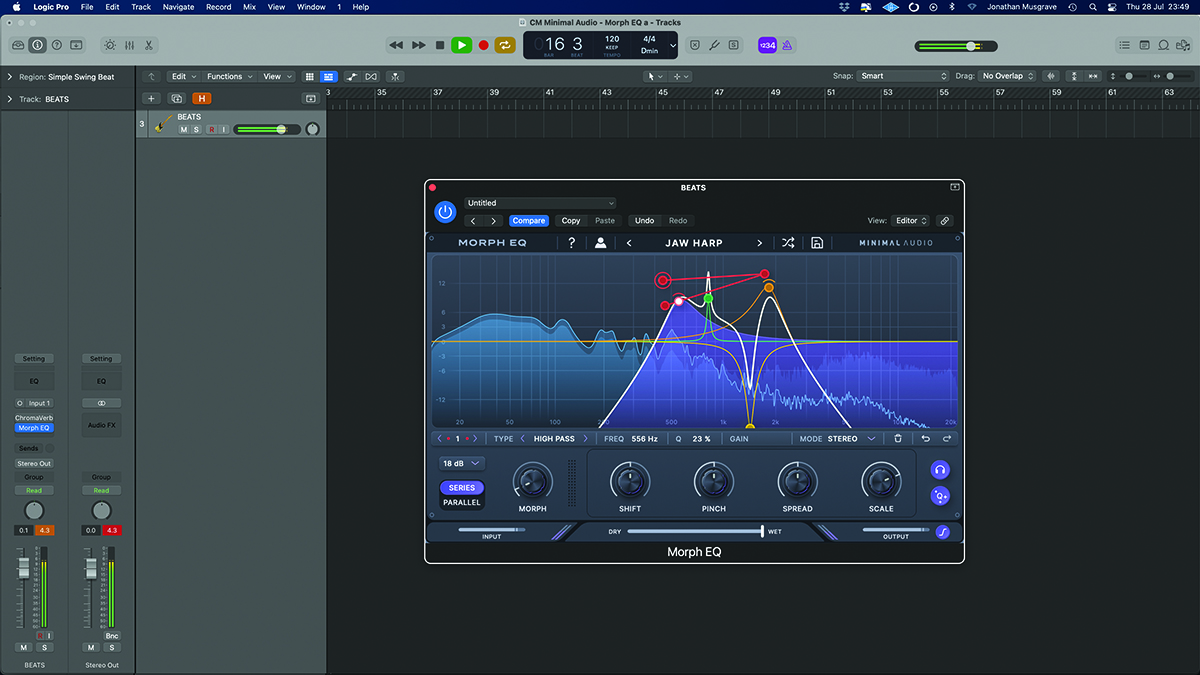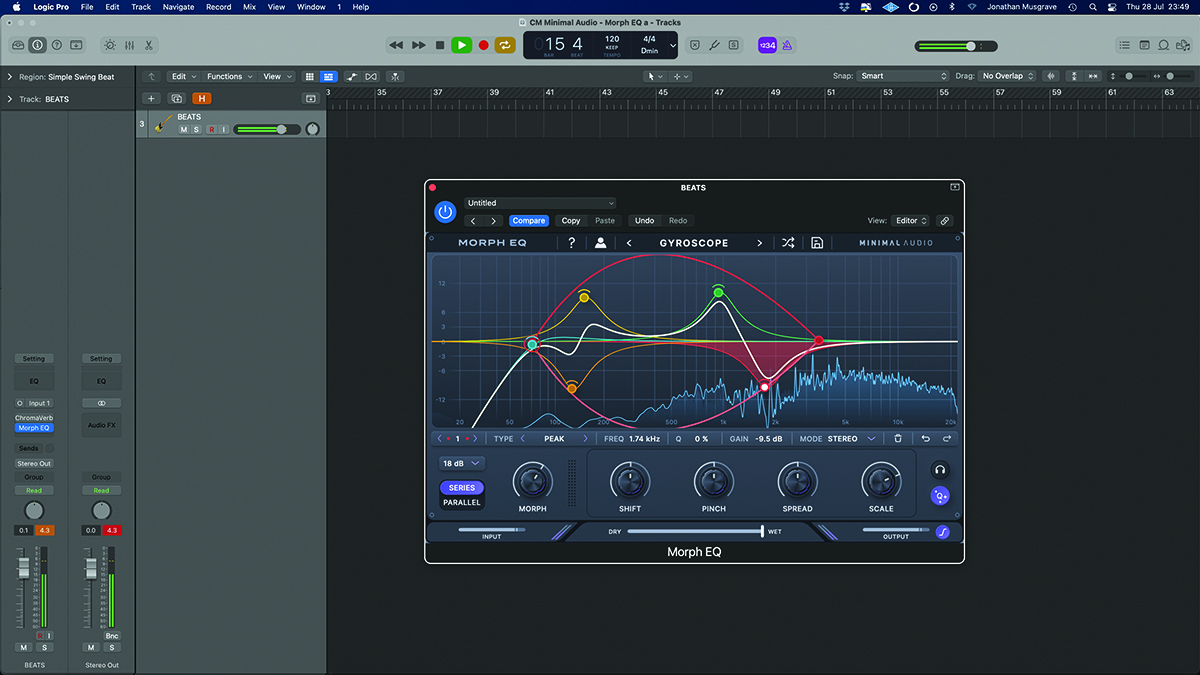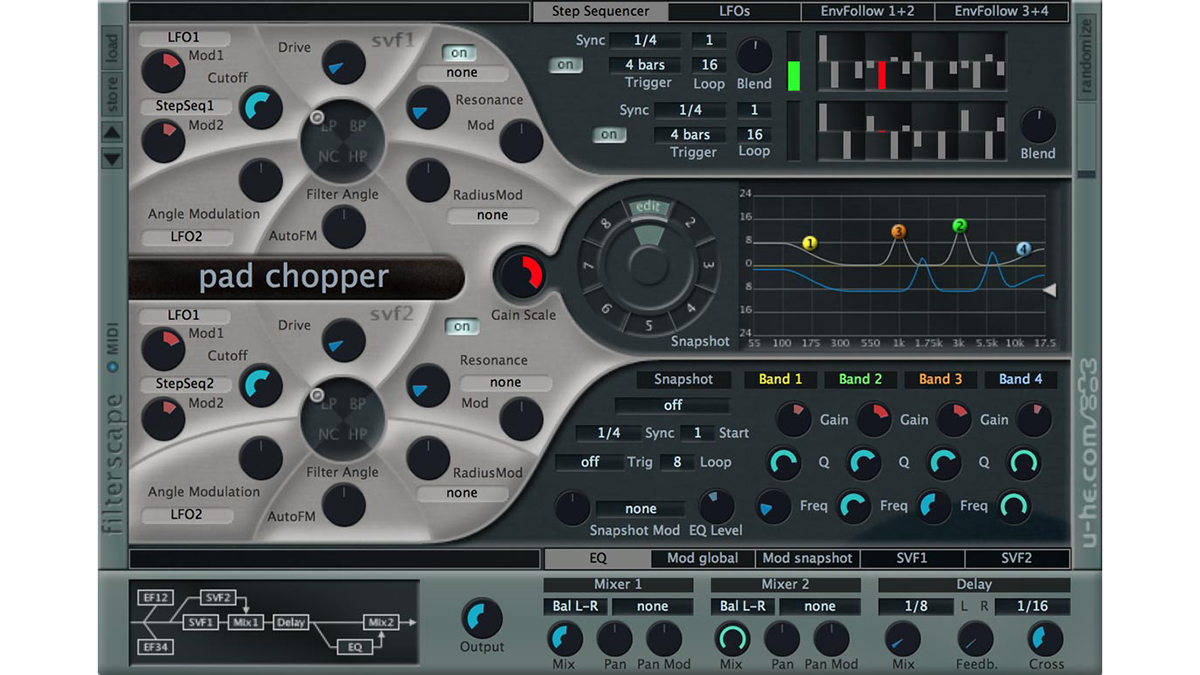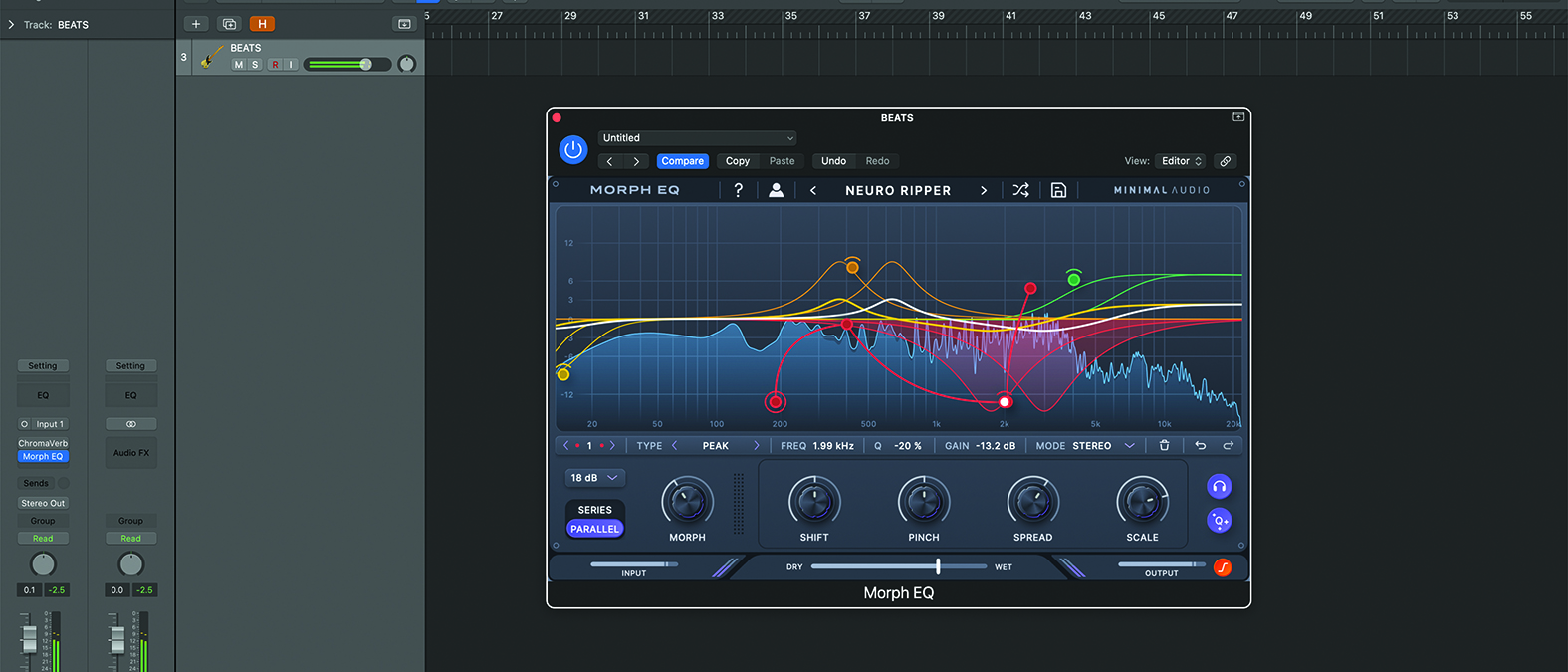MusicRadar Verdict
Morph EQ takes your regular EQ interface and injects it with some real-time manipulation for awesome filtering effects.
Pros
- +
Good choice of filter types.
- +
Flexible and simple morphing system.
- +
Global curve macro controls.
- +
Band-specific channel processing including mid and sides.
- +
Filter band auditioning.
Cons
- -
No individual bypass per filter.
MusicRadar's got your back
Minimal Audio Morph EQ: What is it?
Morph EQ (AU, VST, VST3, AAX) is a flexible EQ processor from Minimal Audio and as the name suggests it can be used for morphing effects, as well as more typical EQ duties. You get unlimited filter bands and seven filter types (high, low and band pass, high and low shelf peak and notch) with +/- 36dB gain where relevant.
Compatibility: macOS 10.9 or higher. Windows 10 or higher. 64 bit AU, VST, VST3, and AAX.
Price: £42/$47/€49
Contact Minimal Audio
Buy from Plugin Boutique
Main features also include series or parallel signal flow, optional gain-dependent filter width, and an output limiter with both gentle saturation and punchy soft clip settings.
You have unlimited filter bands with independent channel assignment (stereo, left, right, mid or sides), but there’s also a whole bunch of very handy global controls (Shift, Pinch, Spread and Scale). Shift and Scale both change all frequencies or all gains collectively and are particularly handy from a time-saving perspective.
Pinch, meanwhile, expands or contracts the overall frequency spread of the bands and is certainly interesting from a creative viewpoint.

Overall though, our favourite here would be Spread. For any stereo filters this lets you gradually offset the filter frequencies between left and right channels.
Spread has a more marked outcome on more complex sounds, or where the filter curves are more dramatic (band pass for example). Nevertheless, we found that it was really great for creative changes to the stereo image.
Further features include frequency analyser display, context sensitive tooltips, global wet/dry mix, three gain scales, individual filter auditioning, input and output gain (-inf to +10dB) and undo/redo for filter changes.
One thing that has not been included is individual band bypass, however, we understand that this may be added in the future.

Minimal Audio Morph EQ: Performance and verdict
The concept sounds simple enough, but how exactly do you set morphing up in Morph EQ? First of all, note that there is no onboard modulation. Instead a master Morph knob controls all active morph pathways. So if you want dynamic effects you need to automate this in your DAW.
Each EQ node (filter point) can be morphed and this is achieved using its halo. Click on a filter point and the halo will appear. Then drag from the halo to another point within the display to create a target. Starting from your new target point you can then create a chain of further nodes that mark out the morphing pathway.
Connections between target points are initially straight lines, but you can use your cursor to drag curved lines. Pathways can be deleted using the right click/CTRL-click menu.
Morphing pathways can be added to as many filters as you like, which ultimately makes for some incredibly complex outcomes.
Presets
Given its creative ambitions, it should come as no surprise that Morph EQ has plenty of presets showcasing its capabilities, and most of them include morphing pathways. Of the 100 or so presets, a few cover standard tasks (Tilt Shelf or Telephone Vocal).
Thankfully, the vast majority of them are creative and grouped into four categories: Morphing, Abstract, Vowel and Filtering. And if you really don’t know where to start, there’s a preset randomise button, which picks a preset rather than randomising the current patch parameters.

• U-he Filterscape
This excellent filter design includes eight morphable snapshots and onboard modulation.
• Obvious Filter
Use the filter sequence and morph features to create excellent rhythmic filter sequences.
Starting with the Morphing bank, presets such as Gyroscope and Low Swell deliver quite extreme changes once you move the Morph knob. Orbitz, as the name suggests, moves its four filters in a rotating circle from about 200Hz to 2kHz.
Each preset delivers its own strange filtering effects as you move the Morph knob, and often you’ll find a small section of the morphing path where the effect is just what you’re after.
This is ideal for creating special effects, and we had great fun using Morph EQ to process basic white noise as well as long one-shot reverb tails. What’s more, a lot of these extreme effects can transform the stereo image with a tweak of the Spread parameter.
Further fun can be had in the Abstract folder, which contains the most extreme effects, and in the Vowel folder, which has some great voice-influenced sounds.
Meanwhile, in the Filter category you’ll find a mixture of traditional and innovative effects: Triple Highpass for example. It is, of course, completely possible to create complex animated EQ moves using DAW automation and a regular EQ, but Morph EQ takes that concept and makes it easier and more fun to achieve, and we think you’ll love this wonderfully creative EQ.
MusicRadar verdict: Morph EQ takes your regular EQ interface and injects it with some real time manipulation for awesome filtering effects.
Minimal Audio Morph EQ: The web says
"When the morphing and macro features are employed, the plug-in’s creative potential goes through the roof. Never has an EQ been so much fun to play with."
MusicTech
Minimal Audio Morph EQ: Hands-on demos
Minimal Audio
White Sea Studio
Polarity Music
Dash Glitch
Minimal Audio Morph EQ: Specifications
- Formats: 64 bit AU, VST, VST3, and AAX.
- Works on: macOS 10.9 or higher. Windows 10 or higher.
- CONTACT: Minimal Audio
Computer Music magazine is the world’s best selling publication dedicated solely to making great music with your Mac or PC computer. Each issue it brings its lucky readers the best in cutting-edge tutorials, need-to-know, expert software reviews and even all the tools you actually need to make great music today, courtesy of our legendary CM Plugin Suite.
“I’m beyond excited to introduce the next evolution of the MT15”: PRS announces refresh of tube amp lineup with the all-new Archon Classic and a high-gain power-up for the Mark Tremonti lunchbox head
"You can repurchase if it works for your schedule": Fyre 2, Billy McFarland’s ‘luxury’ festival is postponed indefinitely
“I actually specifically remember making a deal with myself": Billie Eilish reveals what she had to do in order to become “looser and jazzier” with her vocal delivery











